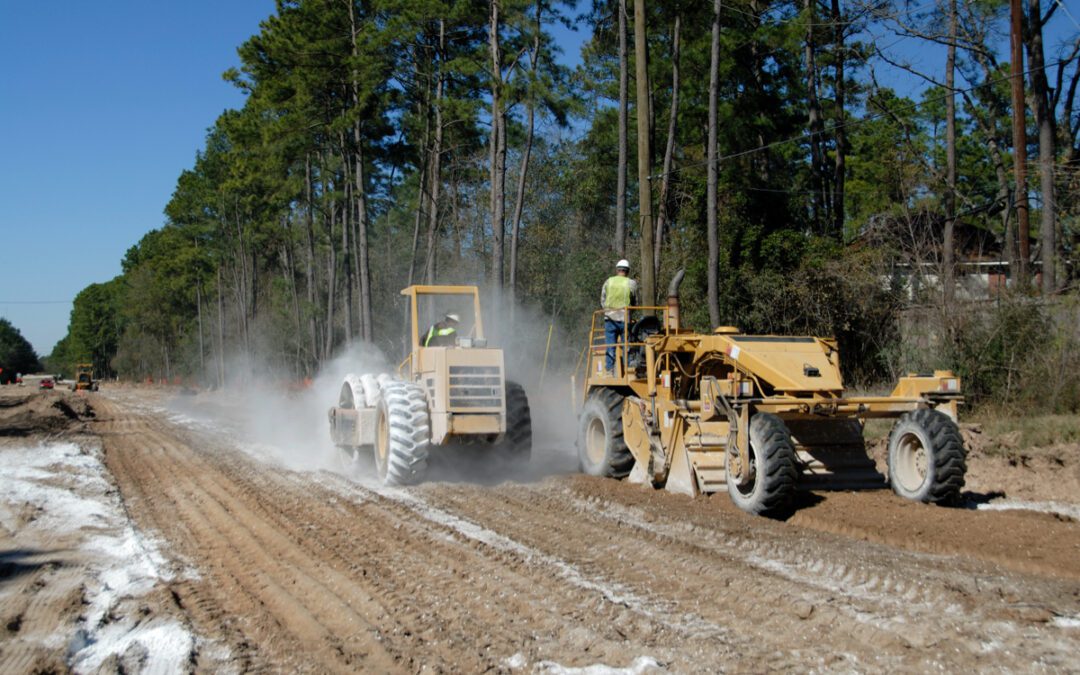Whether you’re involved in plant-based agriculture, feedlot farming, oil & gas lease construction, or industrial mining operations, controlling soil stability beneath and around your site will have a major impact on the productivity, safety, and efficiency of your industrial pursuit. When soil stability maintenance is prioritized, industrial and farming operations can be confident that the ground under their feet will be able to support their project for years to come. When this maintenance is neglected, however, ground and soil instability can be a major pitfall, causing problems that range from irritating operational setbacks to calamitous erosion events. In this article, we will take a closer look at the basics of soil stability, overviewing the main contributing factors to soil integrity, and some commonplace practices for soil stability control in industry and agriculture.
What is ‘Soil Stability’?
The term soil stability – also known as soil aggregate stability – refers to the ability of a soil matrix to regulate the flow and makeup of air and water throughout the soil substrate. Put simply, it describes the ground’s ability to maintain the expected level of structural stability and withstand the rigours of industrial activity and environmental conditions.
What Impacts Soil Stability?
Soil stability can be impacted by several different factors, some of which are environmental and some of which are the result of human and industrial activity.
Soil Composition: Soil composition refers to the balance of minerals and water in the soil, as well as the levels of silt, sand, and clay that make up the soil. This factor is often dictated by the extremely specific local climatic and geographical conditions of a site, as well as its placement relative to surrounding water sources.
Organic Material: Along with moisture and mineral levels, soil stability is also highly associated with the degree and makeup of organic matter within the soil. Living organic materials – such as plants with anchored root systems – can add coherence and firmness to the soil, both at the topsoil and deep into the earth. On the other hand, dead and decaying organic matter – including agricultural animal and plant waste – can cause the soil to become softer, decreasing ground stability.
Soil Compaction: Soil compaction is also highly correlated with the geological features of the industrial site, especially its elevation. When mining, farming, and other industrial operations are set up on or near hills, the ground is often less compacted and more uneven than the soil of flat land, making it more susceptible to the forces of erosion, which can lead to slippage and rutting.
Traffic: Although environmental factors lay the foundation of soil stability, the impact of industrial and agricultural activity on ground and soil stability can not be overstated. In farming practices, repeated tilling can alter the soil’s ability to maintain appropriate moisture and aeration. In livestock farming, trampling, animal waste and feeding practices can progressively lead to soil degradation, instability and watershed. Additionally, in the mining, road-construction and oil & gas industry, the repetitive gravitational forces produced by trucks and other heavy-duty industrial equipment can result in uneven and unstable soil compaction, especially in high-use areas.
Improving Soil Stability
Mechanical Soil Stabilization
In the past, soil stabilization was primarily mechanical. During mechanical soil stabilization, the structural properties of the soil – such as its gradation, solidity, cohesiveness and compaction – are physically altered. By mixing and compacting soils of different grades, the density, uniformity, and aeration of the soil matrix can be fine-tuned. Silts or clays can also be added to increase the integrity and strength of non-cohesive soils. Along with soil blending, structural barriers such as geotextiles can also be utilized to increase stability. Finally, mechanical compaction – which utilizes heavy equipment to repeatedly pound or vibrate the soil – is also common and can effectively eliminate deformities, air pockets or voids in the ground.
Chemical Soil Stabilization
In chemical soil stabilization, material reactants known as ‘binders’ are added to the soil, resulting in an interaction that changes the soil’s chemical and/or structural properties. Traditionally, chemical soil stabilizers have relied on cementitious or pozzolanic reactions; they often make use of cement, lime, and/or bituminous materials, with fly ash or kiln dust also being widely used. Recently, however, innovations in industrial chemical technology have brought new chemical soil stabilizers to market. Introducing polymers into the soil stabilization industry has proven to be particularly useful since polymer-based soil stabilizers are cost-effective, easy to apply in the field, and can offer increased cohesiveness for particularly fine-grained soil. When considering chemical soil stabilization, it is important to bear in mind the unique ground composition of each site, as well as the local regulatory requirements governing chemical application.
Cutting-Edge Soil Stabilization
At Yellowstone Industries, we believe that the foundation of every agricultural and industrial project starts from the ground up. That is why, for over 60 years, we have committed to helping our clients in the agricultural, construction, mining, and oil & gas industries find ground- and soil-stabilization solutions that suit their unique soil, their project goals, and their bottom line.
Whether you are seeking consultation during the planning phase of a project or you require emergency soil remediation, Yellowstone Industries is here to help. Please contact us today to see how your agricultural or industrial project may benefit from enhanced soil stabilization.

